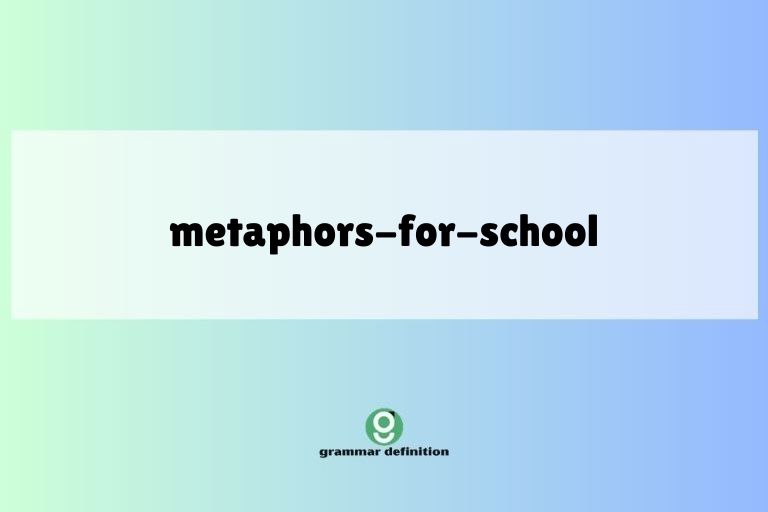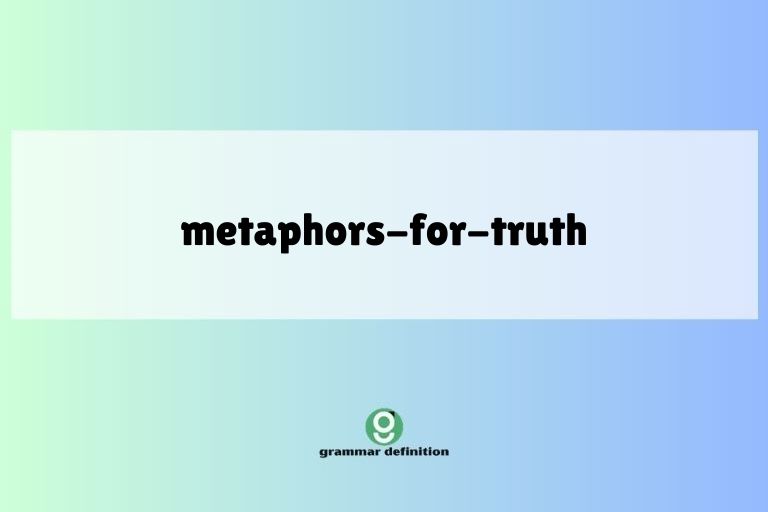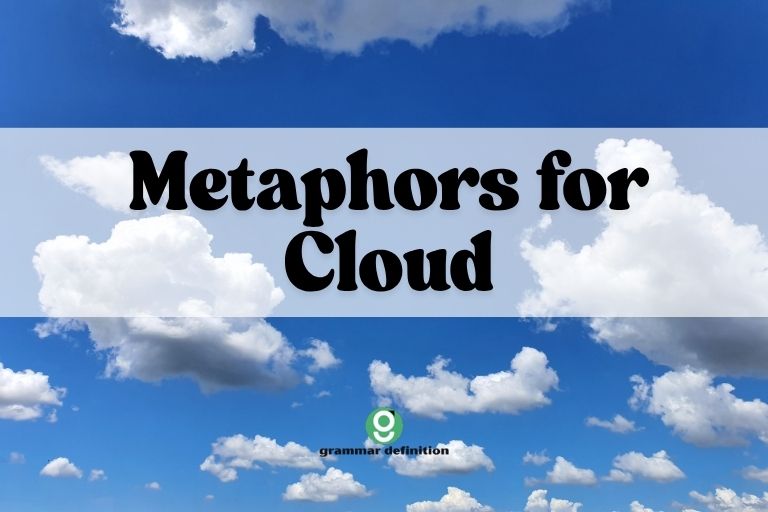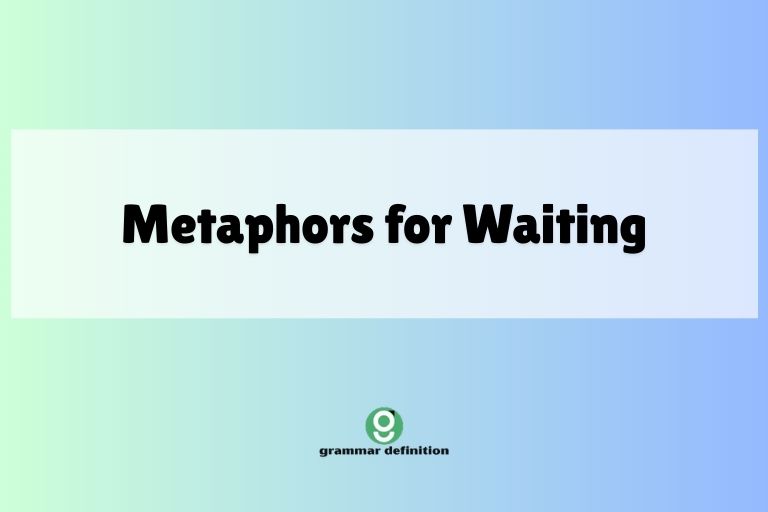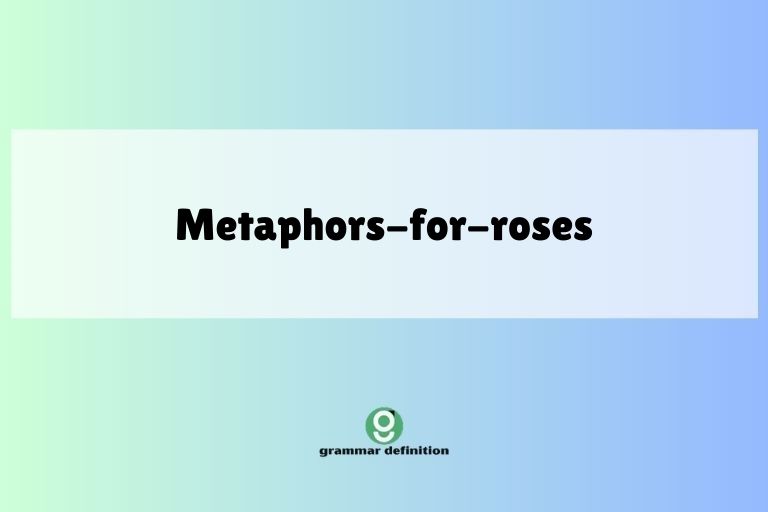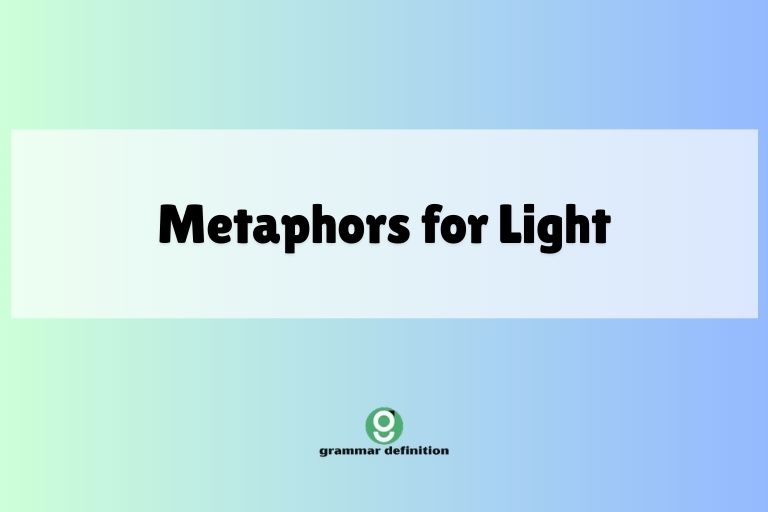Metaphors For Mother: Understanding Figurative Language
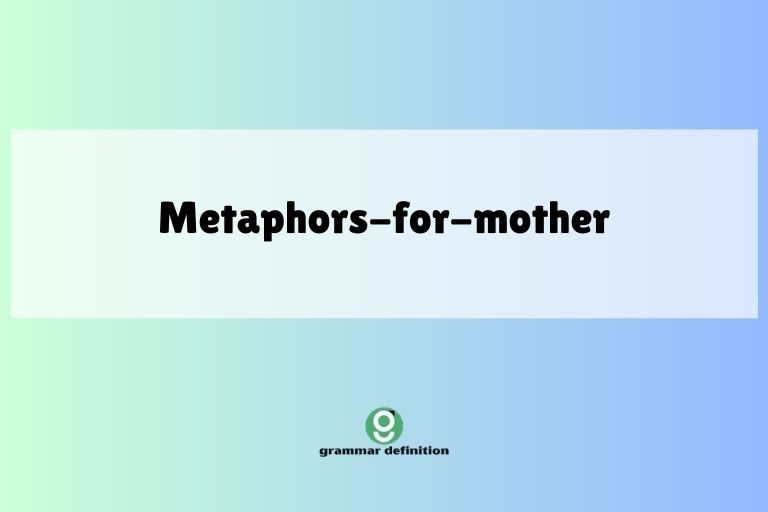
Metaphors are powerful tools that enrich our language, allowing us to express complex ideas and emotions in vivid and relatable ways. When we speak of “mother,” we often go beyond literal descriptions, employing metaphors to capture the essence of motherhood.
Understanding these metaphors not only enhances our appreciation of language but also provides deeper insights into the multifaceted role of mothers in our lives. This article explores various metaphors associated with “mother,” their meanings, and how they are used in English.
This guide is perfect for English language learners, writers, and anyone interested in exploring the beauty and depth of figurative language.
This article will benefit those who wish to enhance their understanding of the English language, improve their writing skills, and gain a deeper appreciation for the cultural and emotional significance of motherhood.
Table of Contents
- Introduction
- Definition of Metaphor and Its Role
- Structural Breakdown of Metaphors
- Types of Metaphors
- Examples of Metaphors for Mother
- Usage Rules for Metaphors
- Common Mistakes When Using Metaphors
- Practice Exercises
- Advanced Topics in Metaphorical Language
- Frequently Asked Questions (FAQ)
- Conclusion
Definition of Metaphor and Its Role
A metaphor is a figure of speech that directly compares two unrelated things without using “like” or “as.” It asserts that one thing is another, creating a vivid and often surprising connection in the reader’s or listener’s mind. The purpose of a metaphor is to transfer qualities from one concept to another, providing new insights and perspectives. Metaphors are essential in language because they allow us to express abstract ideas in concrete terms and evoke strong emotional responses.
Metaphors function by drawing parallels between two seemingly different entities. This comparison isn’t literal; instead, it highlights shared characteristics or evokes similar feelings.
For instance, saying “Her smile was sunshine” doesn’t mean her smile emitted light and heat. It suggests that her smile was warm, radiant, and uplifting, like sunshine.
The effectiveness of a metaphor lies in its ability to create a powerful image or convey a deep emotion in a concise and memorable way.
In the context of “mother,” metaphors are used to capture the multifaceted role and impact of mothers in our lives. They go beyond simple descriptions and attempt to convey the deeper emotional, psychological, and even spiritual significance of motherhood.
By using metaphors, we can express the unique and invaluable contribution of mothers to individuals and society.
Structural Breakdown of Metaphors
Understanding the structure of a metaphor helps in analyzing its effectiveness and crafting compelling figurative language. A typical metaphor consists of two main elements: the tenor and the vehicle.
- Tenor: This is the subject of the metaphor, the thing being described. In the context of this article, the tenor is “mother.”
- Vehicle: This is the object or concept used to describe the tenor. It carries the metaphorical meaning. For example, in the metaphor “My mother is my rock,” the vehicle is “rock.”
The connection between the tenor and the vehicle is not arbitrary. It is based on shared qualities or characteristics.
The vehicle is chosen to highlight specific aspects of the tenor, creating a particular effect. In the example above, “rock” is chosen to emphasize the mother’s stability, strength, and reliability.
Sometimes, a metaphor can also include the ground, which refers to the shared characteristics between the tenor and the vehicle. In the example “My mother is my rock,” the ground includes characteristics like strength, stability, and dependability.
Understanding these structural elements allows us to deconstruct and analyze metaphors, revealing the underlying connections and meanings. It also helps in creating new and original metaphors that effectively convey the intended message.
Types of Metaphors
Metaphors can be classified into several types based on their structure and function. Here are some common types:
- Standard Metaphor: This is the most common type, where the tenor and vehicle are explicitly stated. Example: “My mother is an anchor.”
- Implied Metaphor: The tenor is not explicitly stated but is implied through the vehicle. Example: “She mothered the orphaned birds,” implying that someone acted like a mother.
- Extended Metaphor: A metaphor that is sustained over several lines or even an entire work. It develops the comparison in detail. Example: A poem that compares motherhood to a garden, elaborating on the nurturing, growth, and care involved.
- Mixed Metaphor: A combination of two or more metaphors that are inconsistent or illogical. This is generally considered a flaw in writing. Example: “She weathered the storm and nipped it in the bud.” (combines nautical and horticultural metaphors)
- Dead Metaphor: A metaphor that has become so common that it is no longer recognized as a metaphor. Example: “The heart of the matter.”
Recognizing these different types of metaphors can help in identifying and analyzing figurative language in various contexts. It also provides a framework for creating more nuanced and effective metaphors in your own writing.
Examples of Metaphors for Mother
Metaphors for “mother” are diverse and reflect the many roles and qualities associated with motherhood. These metaphors often draw on natural elements, objects of strength and stability, and sources of guidance and comfort.
Here are several examples categorized by the specific aspect of motherhood they emphasize.
Mother as a Source of Nurture
These metaphors highlight the mother’s role in providing care, sustenance, and emotional support.
The following table contains examples of metaphors that portray mothers as sources of nurture. These examples illustrate how mothers provide care, support, and nourishment to their children, both physically and emotionally.
| Metaphor | Explanation |
|---|---|
| My mother is the wellspring of my life. | She is the source from which all my vitality and growth originate. |
| She is the breadwinner and the bread giver. | She provides both financial support and physical nourishment. |
| Her love is a warm blanket on a cold night. | Her affection provides comfort and security. |
| My mother is a nurturing garden. | She fosters growth and development. |
| She is the milk of human kindness. | She embodies compassion and generosity. |
| My mother is the hearth of our home. | She is the center of warmth and comfort. |
| Her words are sweet honey to my soul. | Her advice and encouragement are nourishing and comforting. |
| She is a fountain of endless support. | She provides constant help and encouragement. |
| My mother is the sun in my sky. | She provides warmth and light to my life. |
| She is the lifeblood of our family. | She is essential to the family’s survival and well-being. |
| My mother is the tree that shelters me from the storm. | She provides protection and security during difficult times. |
| She is a gentle rain on parched earth. | She revives and replenishes my spirit. |
| My mother is the chef of my heart. | She nourishes my emotions and well-being. |
| She is the medicine for my soul. | She heals and comforts me in times of distress. |
| My mother is the baker of my happiness. | She creates joy and contentment in my life. |
| She is a cornucopia of love and care. | She provides an abundance of affection and support. |
| My mother is the river that sustains me. | She provides a constant flow of support and nourishment. |
| She is the seed that grows my potential. | She plants the foundation for my future success. |
| My mother is the oxygen I breathe. | She is essential to my existence and well-being. |
| She is the fertile ground where my dreams take root. | She provides the environment for my aspirations to grow. |
| My mother is the shepherd of my heart. | She guides and protects my emotions. |
| She is the weaver of our family’s fabric. | She creates a strong and interconnected family bond. |
| My mother is the warm embrace I always need. | She provides comfort and security in times of distress. |
| She is the gentle breeze that soothes my worries. | She calms and reassures me when I am anxious. |
Mother as a Protector
These metaphors emphasize the mother’s role in safeguarding her children from harm, both physically and emotionally.
The following table contains examples of metaphors that portray mothers as protectors. These examples highlight how mothers shield their children from danger, offering security and safety.
| Metaphor | Explanation |
|---|---|
| My mother is my shield against the world. | She protects me from external threats and negativity. |
| She is the fortress that guards my heart. | She safeguards my emotions and vulnerabilities. |
| Her love is a bulletproof vest. | Her affection provides impenetrable protection. |
| My mother is a guardian angel. | She watches over me and keeps me safe. |
| She is the wall that stands between me and danger. | She creates a barrier against harm. |
| My mother is the lighthouse in my storm. | She guides me safely through difficult times. |
| She is the knight in shining armor. | She bravely defends me from threats. |
| My mother is the safe harbor in my life. | She provides a secure and comforting refuge. |
| She is the umbrella in my rain. | She shelters me from life’s adversities. |
| My mother is the bodyguard of my soul. | She protects my inner self from harm. |
| She is the security system of my heart. | She ensures my emotional safety. |
| My mother is the watchtower of my life. | She keeps a vigilant eye on my well-being. |
| She is the fence that keeps me from straying. | She guides me away from dangerous paths. |
| My mother is the gatekeeper of my happiness. | She protects my joy and contentment. |
| She is the shield that deflects negativity. | She guards me from harmful influences. |
| My mother is the anchor that holds me steady. | She keeps me grounded and secure in times of turmoil. |
| She is the fire that warms and protects. | She provides both comfort and defense. |
| My mother is the haven in my storm. | She offers a safe place during difficult times. |
| She is the fortress that withstands all assaults. | She remains strong and protects me from any harm. |
| My mother is the watchful eye over my dreams. | She protects my aspirations and goals. |
| She is the guardian of my innocence. | She preserves my purity and naivety. |
| My mother is the sentinel of my soul. | She stands guard over my inner self. |
| She is the guardian of my spirit. | She protects my inner strength and resilience. |
| My mother is the bulwark against despair. | She defends me from feelings of hopelessness. |
| She is the shield that wards off sorrow. | She protects me from sadness and grief. |
Mother as a Guiding Light
These metaphors depict the mother as a source of wisdom, direction, and moral guidance.
The following table contains examples of metaphors that portray mothers as guiding lights. These illustrate how mothers provide wisdom, direction, and moral guidance to their children.
| Metaphor | Explanation |
|---|---|
| My mother is my compass in life. | She helps me navigate through challenges and find my way. |
| She is the North Star that guides me home. | She always leads me back to what is right and true. |
| Her wisdom is a beacon in the dark. | Her insights illuminate my path and help me make wise decisions. |
| My mother is a guiding hand. | She provides support and direction when I need it most. |
| She is the voice of reason in my chaos. | She offers clarity and perspective when I am confused. |
| My mother is the lighthouse that guides my ship. | She helps me steer clear of danger and stay on course. |
| She is the map that leads me to success. | She provides a clear path to achieving my goals. |
| My mother is the teacher of my heart. | She imparts valuable lessons about love and life. |
| She is the mentor who shapes my future. | She guides me toward fulfilling my potential. |
| My mother is the lantern that lights my way. | She illuminates my path and helps me see clearly. |
| She is the GPS for my soul. | She helps me find my way in the world. |
| My mother is the moral compass of my life. | She guides me to make ethical choices. |
| She is the guiding star of my dreams. | She inspires me to pursue my aspirations. |
| My mother is the sage of my existence. | She offers wise counsel and guidance. |
| She is the light that shines through my darkness. | She brings hope and clarity to difficult situations. |
| My mother is the beacon of my hope. | She inspires me to stay optimistic. |
| She is the guiding spirit of my journey. | She leads me toward my true destiny. |
| My mother is the wise owl in my life. | She offers insightful advice and perspective. |
| She is the beacon that calls me home. | She reminds me of my values and roots. |
| My mother is the north star in my night. | She provides constant guidance and direction. |
| She is the roadmap to my future. | She helps me plan and achieve my goals. |
| My mother is the guiding angel of my path. | She watches over me and leads me towards success. |
| She is the teacher of my conscience. | She instills in me a strong sense of right and wrong. |
| My mother is the example I strive to follow. | She embodies the qualities I admire and wish to emulate. |
Mother as a Foundation
These metaphors highlight the mother’s role in providing stability, strength, and a solid base for her children’s lives.
The following table contains examples of metaphors that portray mothers as a foundation. These examples illustrate how mothers provide stability, strength, and a solid base for their children’s lives.
| Metaphor | Explanation |
|---|---|
| My mother is the bedrock of our family. | She is the solid foundation upon which our family is built. |
| She is the root of my being. | She is the source of my strength and identity. |
| Her love is the cornerstone of my life. | Her affection provides essential support and stability. |
| My mother is the foundation upon which I stand. | She provides the support that allows me to grow and succeed. |
| She is the pillar of our home. | She provides unwavering strength and support to the family. |
| My mother is the solid ground beneath my feet. | She keeps me grounded and secure. |
| She is the keystone of our family arch. | She holds everything together and provides essential support. |
| My mother is the anchor that grounds me. | She provides stability and prevents me from drifting. |
| She is the firm base of my confidence. | She instills in me a sense of self-assurance. |
| My mother is the sturdy oak that supports my climb. | She provides strength and resilience as I pursue my goals. |
| She is the foundation of my dreams. | She provides the support I need to achieve my aspirations. |
| My mother is the bedrock of my values. | She instills in me a strong moral compass. |
| She is the solid wall that protects our family. | She provides security and stability against external threats. |
| My mother is the root system of my growth. | She provides the essential nourishment for my development. |
| She is the core of my strength. | She gives me the inner fortitude to face challenges. |
| My mother is the solid ground on which I build my life. | She provides a stable and secure foundation for my future. |
| She is the strong tower that withstands the storm. | She remains steadfast and resilient during difficult times. |
| My mother is the base camp of my adventures. | She provides a safe and supportive place for me to return to. |
| She is the cornerstone of my identity. | She shapes who I am and provides a sense of belonging. |
| My mother is the foundation upon which my success is built. | She provides the support and encouragement I need to achieve my goals. |
| She is the unwavering base of my belief. | She gives me the confidence to believe in myself and my abilities. |
| My mother is the solid platform for my leaps. | She enables me to take risks and pursue opportunities. |
| She is the sturdy frame that holds my life together. | She provides structure and stability. |
| My mother is the root that keeps me grounded. | She reminds me of my values and origins. |
Mother as Nature
These metaphors often compare the mother to elements of nature, highlighting her life-giving, nurturing, and enduring qualities.
The following table contains examples of metaphors that portray mothers as elements of nature. These examples highlight her life-giving, nurturing, and enduring qualities.
| Metaphor | Explanation |
|---|---|
| My mother is the earth that sustains me. | She provides everything I need to grow and thrive. |
| She is the sunshine that warms my soul. | Her presence brings joy and positivity into my life. |
| Her love is the rain that nourishes my spirit. | Her affection revives and replenishes me. |
| My mother is a blooming garden. | She is full of life, beauty, and growth. |
| She is the gentle breeze that soothes my worries. | She calms and reassures me when I am anxious. |
| My mother is the river of my life. | She provides a constant flow of support and nourishment. |
| She is the mountain of my strength. | She provides unwavering support and stability. |
| My mother is the ocean of my emotions. | She understands and accepts all my feelings. |
| She is the forest of my dreams. | She provides a rich and fertile ground for my aspirations. |
| My mother is the sky above me. | She watches over me and provides endless possibilities. |
| She is the moon that lights my night. | She guides me through dark and difficult times. |
| My mother is the star that guides me home. | She always leads me back to what is right and true. |
| She is the flower that brightens my day. | Her presence brings joy and beauty into my life. |
| My mother is the tree that shelters me from the storm. | She provides protection and security during difficult times. |
| She is the sun that gives me life. | Her love and support are essential to my well-being. |
| My mother is the spring that renews me. | She rejuvenates my spirit and brings new energy into my life. |
| She is the seed that grows my potential. | She plants the foundation for my future success. |
| My mother is the fertile ground where my dreams take root. | She provides the environment for my aspirations to grow. |
| She is the gentle rain on parched earth. | She revives and replenishes my spirit. |
| My mother is the breath of my life. | She is essential to my existence and well-being. |
| She is the rhythm of my heart. | She is the constant and essential beat of my life. |
| My mother is the tide that carries me. | She supports and guides me through life’s journey. |
| She is the dawn of my days. | She brings new hope and opportunity into my life. |
Usage Rules for Metaphors
Using metaphors effectively requires careful consideration of several rules:
- Clarity: The metaphor should be clear and easily understood. Avoid overly complex or obscure comparisons.
- Relevance: The vehicle should be relevant to the tenor, sharing meaningful characteristics.
- Originality: Strive for originality to make your writing more engaging and memorable. Avoid clichés.
- Consistency: Maintain consistency within the metaphor. Avoid mixing metaphors that create illogical or confusing images.
- Appropriateness: Ensure the metaphor is appropriate for the tone and context of your writing.
By following these rules, you can create metaphors that enhance your writing and effectively convey your intended message.
Common Mistakes When Using Metaphors
Several common mistakes can weaken the impact of metaphors. Here are some to avoid:
- Mixed Metaphors: Combining two or more metaphors that are inconsistent or illogical.
- Incorrect: “Let’s iron out the wrinkles and nip it in the bud.”
- Correct: “Let’s iron out the wrinkles.” OR “Let’s nip it in the bud.”
- Clichés: Using overused metaphors that have lost their impact.
- Cliché: “My mother is an angel.”
- Better: “My mother is the gentle breeze that soothes my soul.”
- Obscurity: Using metaphors that are too abstract or difficult to understand.
- Unclear: “My mother is a fractal dimension.”
- Clearer: “My mother is a complex and multifaceted individual.”
- Inconsistency: Shifting between different metaphorical images without a clear connection.
Avoiding these mistakes will help you create more effective and impactful metaphors.
Practice Exercises
Test your understanding of metaphors with these exercises.
Exercise 1: Identifying Metaphors
Identify the metaphors in the following sentences and explain what is being compared.
| Question | Answer |
|---|---|
| 1. Her heart is a garden where love blossoms. | Metaphor: “Her heart is a garden.” Comparison: Heart (tenor) is compared to a garden (vehicle) to emphasize growth and beauty. |
| 2. My mother’s advice is a lighthouse guiding me through storms. | Metaphor: “My mother’s advice is a lighthouse.” Comparison: Advice (tenor) is compared to a lighthouse (vehicle) to emphasize guidance and safety. |
| 3. She is the glue that holds our family together. | Metaphor: “She is the glue.” Comparison: Mother (tenor) is compared to glue (vehicle) to emphasize cohesion and unity. |
| 4. My mother is my rock. | Metaphor: “My mother is my rock”. Comparison: Mother (tenor) is compared to rock (vehicle) to emphasize stability and strength. |
| 5. She is the sun in my sky. | Metaphor: “She is the sun”. Comparison: Mother (tenor) is compared to sun (vehicle) to emphasize warmth and light. |
| 6. My mother’s love is a warm blanket on a cold night. | Metaphor: “My mother’s love is a warm blanket”. Comparison: Mother’s love (tenor) is compared to a warm blanket (vehicle) to emphasize warmth and comfort. |
| 7. She is the root of my being. | Metaphor: “She is the root”. Comparison: Mother (tenor) is compared to root (vehicle) to emphasize foundation and origin. |
| 8. My mother is the anchor that grounds me. | Metaphor: “My mother is the anchor”. Comparison: Mother (tenor) is compared to anchor (vehicle) to emphasize stability and security. |
| 9. She is the shield against the world. | Metaphor: “She is the shield”. Comparison: Mother (tenor) is compared to shield (vehicle) to emphasize protection. |
| 10. My mother is the tree that shelters me. | Metaphor: “My mother is the tree”. Comparison: Mother (tenor) is compared to tree (vehicle) to emphasize protection and shelter. |
Exercise 2: Creating Metaphors
Create your own metaphors for “mother” based on the following prompts.
| Prompt | Answer |
|---|---|
| 1. Mother as a source of strength | My mother is the steel in my spine, always supporting me. |
| 2. Mother as a guide | She is the compass pointing me towards my true north. |
| 3. Mother as a protector | My mother is the fortress guarding my heart from harm. |
| 4. Mother as a nurturer | She is the gentle rain that nourishes my growing spirit. |
| 5. Mother as a foundation | My mother is the bedrock on which I build my dreams. |
| 6. Mother as a light | She is the sun that illuminates my darkest days. |
| 7. Mother as a healer | My mother is the balm that soothes my wounded soul. |
| 8. Mother as a lifeline | She is the rope that pulls me from the depths of despair. |
| 9. Mother as a mentor | My mother is the wise owl guiding me through the forest of life. |
| 10. Mother as a home | She is the hearth where my heart finds warmth and comfort. |
Exercise 3: Correcting Mixed Metaphors
Identify and correct the mixed metaphors in the following sentences.
| Question | Answer |
|---|---|
| 1. She navigated the sea of life and nipped her problems in the bud. | Mixed metaphor. Correct: She navigated the sea of life. OR She nipped her problems in the bud. |
| 2. He climbed the ladder of success and then fell through the cracks. | Mixed metaphor. Correct: He climbed the ladder of success. OR He fell through the cracks. |
| 3. The project was a rollercoaster ride that hit a brick wall. | Mixed metaphor. Correct: The project was a rollercoaster ride. OR The project hit a brick wall. |
| 4. She was skating on thin ice and burning the candle at both ends. | Mixed metaphor. Correct: She was skating on thin ice. OR She was burning the candle at both ends. |
| 5. He was a shining star who was also a diamond in the rough. | Mixed metaphor. Correct: He was a shining star. OR He was a diamond in the rough. |
| 6. She weathered the storm and then jumped the gun. | Mixed metaphor. Correct: She weathered the storm. OR She jumped the gun. |
| 7. The plan was a house of cards that also had all its ducks in a row. | Mixed metaphor. Correct: The plan was a house of cards. OR The plan had all its ducks in a row. |
| 8. He was fishing for compliments while also keeping his cards close to his chest. | Mixed metaphor. Correct: He was fishing for compliments. OR He was keeping his cards close to his chest. |
| 9. She was on cloud nine and also had her feet firmly planted on the ground. | Mixed metaphor. Correct: She was on cloud nine. OR She had her feet firmly planted on the ground. |
| 10. The idea was a beacon of hope that also needed to be nipped in the bud. | Mixed metaphor. Correct: The idea was a beacon of hope. OR The idea needed to be nipped in the bud. |
Advanced Topics in Metaphorical Language
For advanced learners, exploring the following topics can further enhance your understanding of metaphors:
- Cognitive Metaphor Theory: This theory explores how metaphors are not just linguistic devices but also fundamental to our thought processes.
- Conceptual Metaphors: Understanding how abstract concepts are often structured metaphorically (e.g., “ARGUMENT IS WAR”).
- Metaphor and Culture: Exploring how cultural contexts influence the interpretation and use of metaphors.
- The Role of Metaphor in Literature and Poetry: Analyzing how metaphors are used to create deeper meaning and emotional impact in
literature.
- Metaphor in Rhetoric and Persuasion: Investigating how metaphors are used to influence and persuade audiences.
Frequently Asked Questions (FAQ)
What is the difference between a metaphor and a simile?
A metaphor directly equates two things (e.g., “She is sunshine”), while a simile uses “like” or “as” to make a comparison (e.g., “She is like sunshine”).
Why are metaphors important in language?
Metaphors allow us to express abstract ideas in concrete terms, evoke emotions, and provide new perspectives.
How can I improve my use of metaphors?
Practice identifying metaphors in literature and everyday language, and experiment with creating your own original metaphors. Pay attention to clarity, relevance, and consistency.
What is a mixed metaphor, and why should I avoid it?
A mixed metaphor combines inconsistent or illogical comparisons, creating confusion and weakening the impact of your writing. It should be avoided for clarity and coherence.
Are there any cultural differences in the use of metaphors?
Yes, cultural backgrounds can significantly influence the interpretation and use of metaphors. What is a common metaphor in one culture may be unfamiliar or have a different meaning in another.
How do dead metaphors affect language?
Dead metaphors are overused and no longer recognized as figurative language. While they don’t necessarily harm language, they lack the impact and freshness of original metaphors.
Can metaphors be used in technical writing?
Yes, but sparingly. When used appropriately, metaphors can clarify complex concepts.
However, clarity and precision should always be the primary goal in technical writing.
What is the role of context in understanding metaphors?
Context is crucial for understanding metaphors. The surrounding words, sentences, and overall situation provide clues to the intended meaning and help avoid misinterpretations.
How can metaphors be used to enhance creative writing?
Metaphors add depth, imagery, and emotional resonance to creative writing, making it more engaging and memorable for the reader.
What are conceptual metaphors?
Conceptual metaphors are fundamental cognitive structures that shape how we understand abstract concepts. They involve understanding one domain of experience in terms of another (e.g., “ARGUMENT IS WAR”).
Conclusion
Metaphors are invaluable tools for enriching language and conveying complex ideas and emotions. By understanding the structure, types, and usage rules of metaphors, you can enhance your writing and communication skills.
In the context of “mother,” metaphors provide a powerful means of expressing the multifaceted role and profound impact of mothers in our lives. Whether as a source of nurture, a protector, a guiding light, a foundation, or an element of nature, the metaphorical representations of “mother” capture the essence of this vital and cherished figure.
Continue to explore and experiment with metaphors to unlock the full potential of figurative language and to express your thoughts and feelings with greater depth and creativity. The world of metaphors is vast and rewarding, offering endless possibilities for linguistic expression and understanding.

